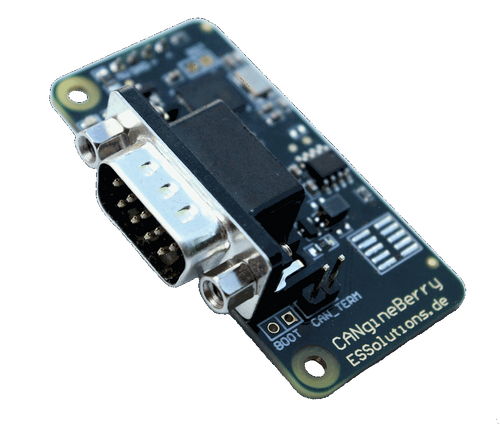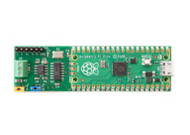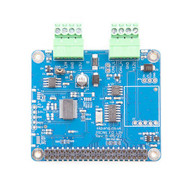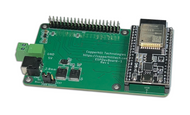Product Description
Free Shipping Within the United States!
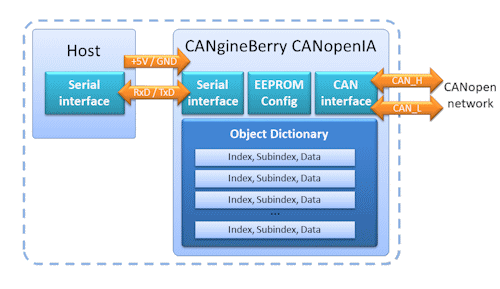 The CANgineBerry for CANopen is an active CAN Bus co-processor module that uses a regular UART communication channel towards the host system. With its independent 32-bit microcontroller, the CANgineBerry can easily execute CAN Bus protocols with tough timing demands such as CANcrypt or CANopen with response times of under 10 ms.
The CANgineBerry for CANopen is an active CAN Bus co-processor module that uses a regular UART communication channel towards the host system. With its independent 32-bit microcontroller, the CANgineBerry can easily execute CAN Bus protocols with tough timing demands such as CANcrypt or CANopen with response times of under 10 ms.
Depending on the configuration, the CAN Bus communication can be up and running within 50 ms after power-on, even if the host system takes significantly longer to boot.
Available firmware options at launch include a generic minimal CANopen Manager/Controller and a CANopenIA Device both based on the CANopenIA implementation. Within the next weeks we will also release a CANcrypt version of the popular Lawicel protocol (SLCAN).
The connection to the host system uses only four pins: Two for power (5 V) and two for the UART. The four-pin header row directly matches the Raspberry Pi pin layout, but also other common connectors, such as popular USB-to-UART converter chips/modules, if the correct voltage levels are used (5 V supply, 3.3 V signals).
The serial protocol between host and CANopenIA is the CANopen remote access protocol by Embedded Systems Academy. It supports reporting events (new data arrived on CANopen side) as well as reading and writing data of the local Object Dictionary.
The CANopen Manager performs automatic network scans, simplifying application code as it can directly access the data scanned.
CANopen Manager implementations also support read and write accesses to Object Dictionary entries of any node connected to the CANopen network. For more information visit the dedicated web page at www.canopenia.com.
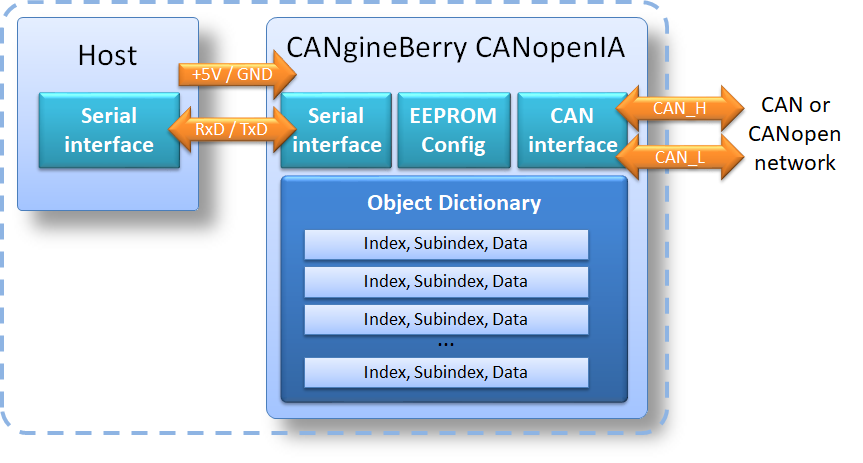
Features
- The CANgineBerry is equipped with a custom bootloader allowing the installation of one of the firmware packages provided by Embedded Systems Academy.
- Two LEDs (green and red) indicate the network connection status.
- EEPROM to store configuration data.
- CAN termination configuration by jumper.
- Based on a Cortex-M0 microcontroller.
The CANgineBerry fits directly onto the Raspberry Pi 3. Delivery includes a set of screw for proper fixation. Linux command line utilities can be executed to program and configure the CANgineBerry. Programming examples for Linux are provided per download from this web page..
CANgineBerry Resources
- CANgineBerry Manual (.pdf)...
- CANgineBerry Quick Start (.pdf)...
- CANgineBerry Linux Software Archive (.tar.gz)...
- CANgineBerry Windows Software Archive (.zip)...
- CANopen Architect Mini Software (for custom CANopen device configurations)...
CANgineBerry Windows Software
The extracted file structure contains the following:
Directory "APPS"
Contains the various applications that can be loaded into the CANgineBerry using the COIAUpdater utility.
+ CANopenIA-BEDS: CANopen Device (slave)
+ CANopenIA-MGR: CANopen Manager (master)
Directory "CODE":
Contains code examples
Directory "DOC"
Contains the main CANgineBerry documentation of the hardware, the bootloader and the COIAUpdater utility.
Directory "UTIL"
Contains the utilities provided.
+ COIA: generic command line utility for communicating with the CANopenIA-MGR and CANopenIA-BEDS apps
+ COIAUpdater: load applications and configuration files to the CANgineBerry, configure hardware settings
+ TST (dir): directory with shell scripts as example and for testing
CANopen Architect Mini Software
CANopen Architect allows quick and easy generation and editing of EDS files. Files can be built from scratch or based on one of the versions in the included library. The user interface presents the contents of the EDS file in a tree view, allowing quick and easy editing of any aspect.
CANopen Architect also supports the creation and editing of Device Configuration Files (DCF). DCFs are the same as EDS files but contain real settings from a specific node. Unlike many other EDS editors, CANopen Architect supports the editing of data that is specific to DCFs.
CANopen Architect provides an integrated EDS checker and also supports the use of third party EDS checkers. EDS checkers validate the EDS files and provide error and warning information.
Compared to the Professional version, the Lite version comes with the following restrictions:
- It is not possible to save any EDS or DCF files.
- It is not possible to export any files except limited version of binary configuration files (BEDS).
- A maximum of one EDS/DCF can be edited in a single project (the full version allows up to 255).
- Documentation export is limited to 10 entries per EDS.
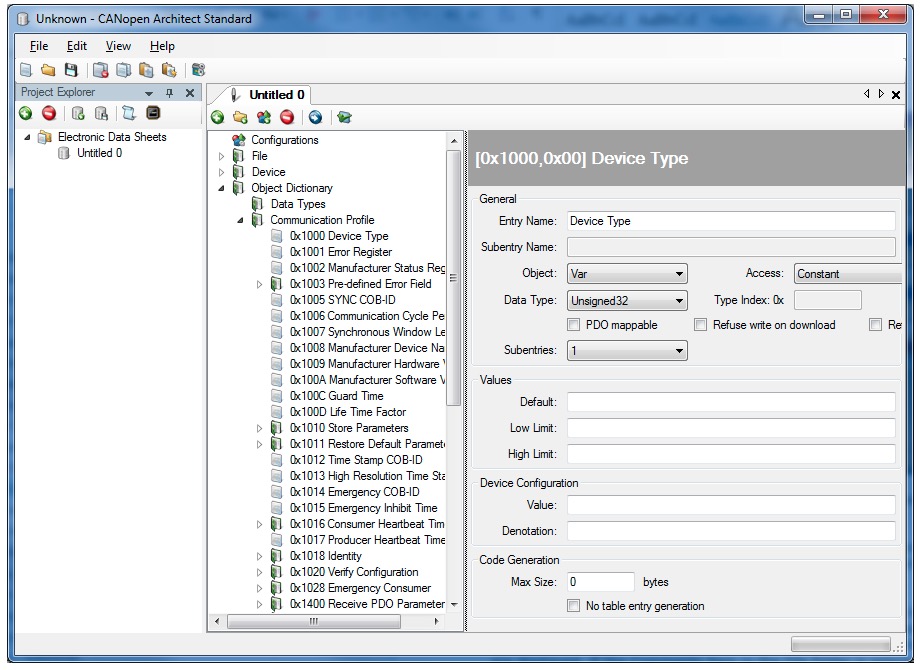
More Resources
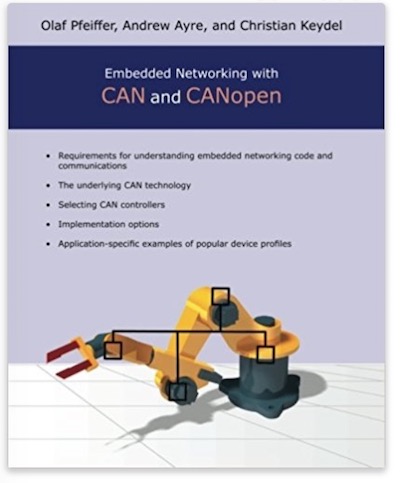
Embedded Networking With CAN And CANopen
CAN (Controller Area Network) is a serial communication protocol that was originally developed for the automobile industry. CAN is far superior to conventional serial technologies such as RS232 in regards to functionality and reliability and yet CAN implementations are more cost effective.
CANopen, a higher layer protocol based on CAN, provides the means to apply the ingenious CAN features to a variety of industrial-strength applications.
Many users, for example in the field of medical engineering, opted for CANopen because they have to meet particularly stringent safety requirements. Similar requirements had to be considered by manufacturers of other equipment with very high safety or reliability requirements (e.g. robots, lifts and transportation systems).
Providing a detailed look at both CAN and CANopen, this book examines those technologies in the context of embedded networks. There is an overview of general embedded networking and an introduction to the primary functionality provided by CANopen.
Everything one needs to know to configure and operate a CANopen network using off-the-shelf components is described, along with details for those designers who want to build their own CANopen nodes.
The wide variety of applications for CAN and CANopen is discussed, and instructions in developing embedded networks based on the protocol are included. In addition, references and examples using MicroCANopen, PCANopen Magic, and Vector's high-end development tools are provided.
 Loading... Please wait...
Loading... Please wait...

